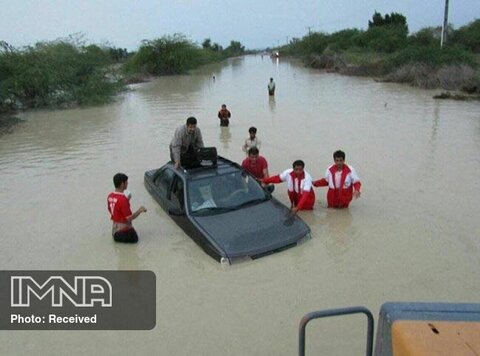Iran (IMN) - The Department of Environment in the Iranian flood-stricken province of Sistan and Baluchestan on Monday warned the local people about marsh crocodiles that may have strayed from ponds into flooded areas. Some of the reptiles have been spotted in flooded villages of the province.
Unprecedented floods in Sistan and Baluchestan and adjacent Kerman and South Khorasan provinces have displaced thousands and killed at least one person since last Thursday.
More than 500 villages and 14 towns have been affected by the floods and 20,000 houses have been damaged or destroyed in Sistan and Baluchestan province.
Some photos posted on social media show people taking refuge on trees. The situation on the ground is "critical" according to Aziz Sarani, a representative of the province in the parliament.
Sistan and Baluchestan province neighbors Pakistan in the southeast of the country and is arguably the most underdeveloped province.
According to the Director-General of Sistan and Baluchestan Province the crocodiles, called gando in the local Baluchi language, have become aggressive due to feeling endangered by the floods.
Gandos usually shy away from humans and only attack when they feel danger. The local people venerate gandos and feed them at times of draught but there have been several reports of attacks on humans in the past.
The marsh crocodile, also known as short-muzzle, short-snout or mugger crocodile is a native wildlife in Iran and the Indian subcontinent and can be found in freshwater lakes, ponds and slow-moving rivers. They are carnivorous reptiles of about 2.5 to 3 meters.
The species was on the brink of extinction in Iran due to human activity and long drought in the late 1990s and 2000s but much of its habitat was restored following several tropical cyclones in 2007 and 2010 when some former lakes and ponds were flooded again.
Around 400 gandos live in a dedicated protected area of 380,000 hectars surrounded by Chabahar, Sarbaz and Nikshahar in Sistan and Baluchestan.


Your Comment